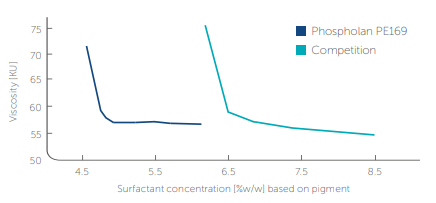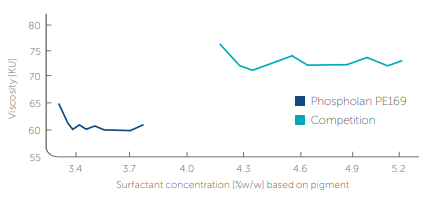Enhanced TDS
Knowde-enriched technical product data sheet
Identification & Functionality
- Carrier
- Chemical Family
- Agrochemical Functions
- CASE Ingredients Functions
- Cleaning Ingredients Functions
- Industrial Additives Functions
- Technologies
- Product Families
Features & Benefits
- Labeling Claims
- CASE Ingredients Features
- HII Features
- Key Benefits
Universal and water borne colorants:
- Good for dispersing all types of pigments, in particular inorganic pigments.
- Provides for good color acceptance when tinting either solvent borne or water borne white base paint.
Paints:
- Improves color acceptance and increases gloss
- Enhances corrosion resistance performance of paints and coatings
Applications & Uses
- Markets
- Applications
- Compatible Substrates & Surfaces
- Home Care Applications
- Use Level
- 0.3 - 0.5% (Paint)
- Applications
Phospholan PE169 is very versatile in its use and has a proven effect in many applications such as:
Pigment dispersion in paints and colorants, water borne and solvent borne formulations
- Corrosion resistance additive in steel paint and coatings
- Process additive in the production of emulsion polymers, typically for paint formulations. Phospholan PE169 has a combined emulsifying and colloidal stabilizing effect
Phospholan PE169 is supplied as a 100% active product, in its acid form. The product can be used either as is, or by neutralization depending on the application. The pH should be above 7 for Phospholan PE169 to be anionic, otherwise it will be nonionic.
Phospholan PE169 is used either as the single surfactant, or in combination with other nonionic, amphoteric or anionic surfactants. Phospholan PE169 is capable of providing some corrosion resistance on steel.
Demand curve, PB15:4
 Comparison of surfactant demand of competitor phosphate ester with Phospholan PE169 with pigment Heliogen Blue LB L7101F (PB15:4)Demand curve, PY42
Comparison of surfactant demand of competitor phosphate ester with Phospholan PE169 with pigment Heliogen Blue LB L7101F (PB15:4)Demand curve, PY42 Comparison of surfactant demand of competitor phosphate ester with Phospholan PE169 with pigment Bayferrox 3910 (PY42)
Comparison of surfactant demand of competitor phosphate ester with Phospholan PE169 with pigment Bayferrox 3910 (PY42)
Properties
- Formulation Type
- Physical Form
- Appearance
- Clear liquid
- Soluble in
- Ethanol, Propylene glycol, White spirit, n-paraffin
- Dispersible in
- Water
- Physical Properties
Value Units Test Method / Conditions Density (at 20°C) 1040 kg/m³ - - Characteristics
Value Units Test Method / Conditions Active Content 100 % - Foam Height according to Ross-Miles (0 ppm after 5 mm at 50°Cin 0.05%, ph 6) 78 ppm - Foam Height according to Ross-Miles (0 ppm immediately at 50°C in 0.05%, ph 6) 108 mm - Flash Point min. 150 °C - Foam Height according to Ross-Miles (300 ppm after 5 mm at 50°Cin 0.05%, ph 6) 56 mm - Foam Height according to Ross-Miles (300 ppm immediately at 50°C in 0.05%, ph 6) 83 ppm - Pour Point -10 °C - Surface Tension (according to Du Noüy at pH 6, 25°C in 0.1%) 28 mN/m DIN 53914 Viscosity (at 20°C) approx. 900 mPa.s - Wetting Power (according to Draves, at 25°C in 0.1%, pH 6) 23 second - pH (1% in water) 2.5 - Specifications
Value Units Test Method / Conditions Acid Value 70.0 - 78.0 mg KOH/g - Water Content max. 1 % -
Regulatory & Compliance
- Certifications & Compliance
- Chemical Inventories
Packaging & Availability
- Regional Availability